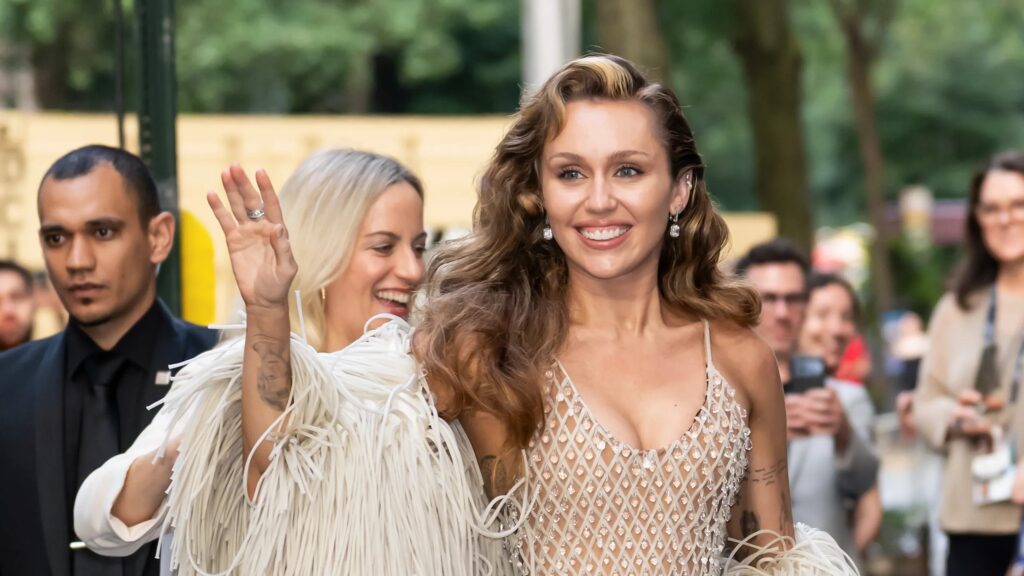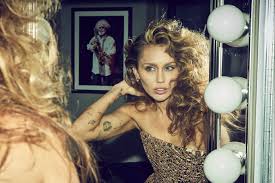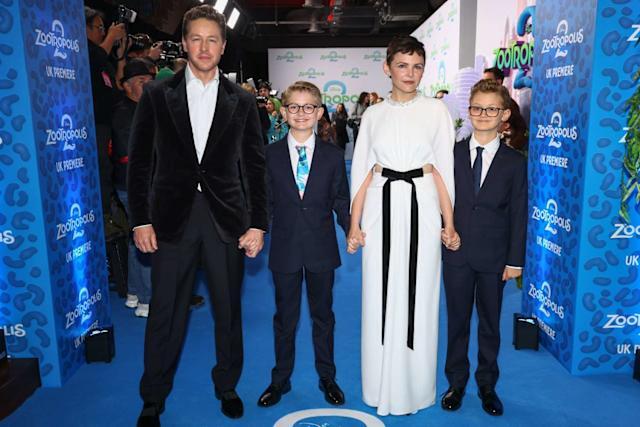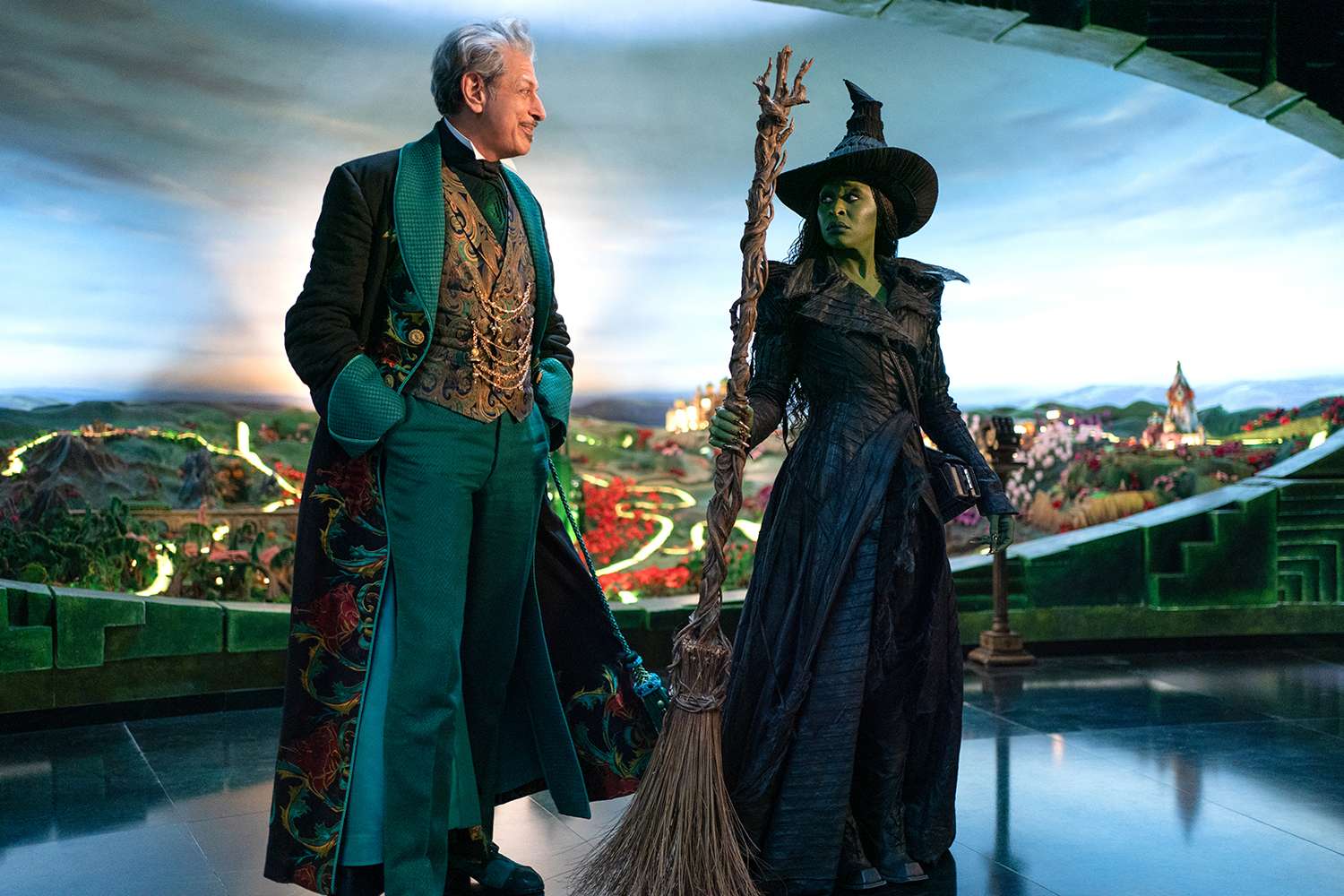On a warm June evening in New York City, beneath the chandeliers of the Beacon Theatre and amidst a chorus of camera shutters, Miley Cyrus made an entrance that was both commanding and playful. Draped in a sheer beaded dress, shimmering under the lights, and trailed by a cascade of cream-colored strands, she looked every bit the pop surrealist heroine of her own story. “Everybody say ‘dysfunctional!’” she shouted with a wide grin, breaking the pageantry of the red carpet with a signature wink at seriousness.
This wasn’t just another album rollout. This was the premiere of Something Beautiful, a visual album that plays more like a cinematic moodboard than a traditional music video collection. The event, part of the 2025 Tribeca Film Festival, marked a high-art pivot for one of pop music’s most relentlessly evolving icons. And just as importantly, it was a window into a new emotional terrain for Miley Cyrus—one layered with memory, music, messiness, and meaning.
As Miley gathered the creative crew that helped bring Something Beautiful to life—including her mother, Tish, and a tight circle of collaborators—the energy on the red carpet felt more communal than corporate. The vibe was not the stiff, overpolished gloss of industry events. Instead, it was more like a deeply personal celebration dressed in couture.
Inside the sold-out Beacon Theatre, the premiere had the kind of atmosphere usually reserved for fan-packed arena tours. This wasn’t a quiet film debut—it was a full-on communal experience. Devotees in the audience didn’t just watch; they sang along to unreleased tracks, clapped between scenes, and engaged with every emotional beat of the film. The connection was electric.
After the screening, Cyrus returned to the stage for a chatback with the audience. With her signature mix of sincerity and sass, she discussed the emotional undercurrents of the album and how its visual companion was conceived in a whirlwind two-week shoot. In one especially intimate moment, she led the crowd in a singalong of her 2009 hit, The Climb, tying her present evolution to her pop-princess past.
“There’s nothing more beautiful on the planet than deep emotion,” she told the crowd—an apt summation of what the audience had just seen.
Something Beautiful is not your average music video montage. It’s more like a collection of fever dreams: 13 tracks, each with its own mood, texture, and aesthetic, stitched together with the emotional logic of memory rather than plot.
Shot over the course of two weeks, the visuals span an ambitious range—from windswept landscapes to grimy late-night street scenes. But what unifies them is the emotional rawness and attention to detail in every frame.
In “Golden Burning Sun,” Miley dances through candy-colored clouds and golden rays, the whole scene bathed in a hue that suggests both dreamscape and divine warmth. In “Reborn,” which nods to Madonna’s iconic ’90s look, she stalks through a color-drained world that feels at once sterile and seductive.

The film plays like a high-fashion collage, blending surrealism, pop glamour, and an industrial grunge sensibility. Cyrus’ use of props—especially her beloved wind machine—turns even simple shots into kinetic sculptures. You feel the wind, you feel the weight of the emotion, and you believe every frame is purposeful.
One of the film’s most unforgettable moments comes in the music video for “End of the World,” arguably the standout track from the album. The video begins in a hauntingly lit alley at 2 a.m., the street unkempt and littered—real, raw, and unfiltered.
“We had everything we needed… besides a broom,” Cyrus later joked about the shoot, underscoring her commitment to authenticity over perfection.
As the song pulses forward—a euphoric club banger with a beating, throbbing heart—Cyrus rolls across the pavement in fishnets and a beaded headpiece. Her eyes never leave the camera. She is both performer and subject, daring the viewer to look deeper. This moment captures the very essence of Something Beautiful: intimacy wrapped in spectacle.
Adding another layer of drama is Brittany Howard, who appears in sharp vocal counterpoint. Her voice slices through the glitter and fog like a clarion call, lending the song a wild gospel energy that only intensifies its emotional gravity.
Midway through the film, another seismic moment hits: Naomi Campbell joins Cyrus for a duet that’s part runway, part rebellion. The track is pure sexy-tough pop, and the two icons—both in black bodices and fishnets—deliver a performance that’s at once confrontational and celebratory.
The visual closes on the pair laughing and strutting off-screen together. It’s not just cool—it’s cultural currency. These are women who’ve seen it all, shaped it all, and are now writing their own rules for how to strut through a world that’s always tried to contain them.
While the visuals are striking, the soul of the project lies in its inspiration. Cyrus has cited The Wall by Pink Floyd as a creative touchstone. Not just for its concept-album format, but for what it meant personally—particularly a memory shared with one of her brothers.
Much like The Wall, Something Beautiful doesn’t follow a straightforward narrative. Instead, it’s a constellation of feelings—longing, anger, healing, euphoria—all orbiting around the central idea that beauty often grows from broken places.
“There isn’t any filler,” Cyrus said of the album, and the visuals back that up. Every track, every image, every cut feels considered. Whether she’s strutting down the Hollywood Walk of Fame or dancing in the shadow of an industrial fan, Cyrus is inviting viewers into something vulnerable and curated with love.
With this project, Miley is more than just a pop star—she’s a full-fledged auteur. She’s directing, conceptualizing, styling, performing. Her fingerprints are all over the frame. That kind of control is rare in the mainstream music industry, and even more rare when it results in something this bold and well-executed.

And she’s clearly having fun with it. Whether she’s mocking herself with lines like “Everybody say ‘dysfunctional!’” or wearing couture in a trash-littered alley, Cyrus plays with the line between chaos and control, spectacle and sincerity.
There’s a subversive joy in how she dismantles pop perfection while simultaneously embracing pop’s full theatrical power. It’s an emotional tightrope she’s walked since her Bangerz days, but here, it’s matured into something far more self-aware.
At the Tribeca premiere, the emotional intensity of the project was palpable. But there were also moments of friction. Some fans, apparently expecting a live concert, began shouting for Cyrus to perform during the screening.
Always quick on her feet, Cyrus eventually gave in, singing a few lines of “The Climb” to calm the crowd. It was a reminder of how public perception can lag behind an artist’s evolution. For many, she’ll always be the Disney-grown powerhouse they watched grow up. But with Something Beautiful, Cyrus seems intent on building a new identity—one that’s less concerned with pleasing and more invested in truth-telling.
Later, she addressed the incident with grace, emphasizing mutual respect and encouraging fans to embrace the depth of the work she’d presented. It was a fitting close to an evening that was part performance, part catharsis.
After its festival debut, Something Beautiful is set for a one-day theatrical release across the U.S. on June 12. International screenings and streaming availability will follow. But regardless of its distribution, the project has already made its mark as one of the most artistically ambitious offerings of Cyrus’s career.
It may not top the charts in the traditional sense, and it may confound casual listeners who expect pop to follow a more predictable arc. But for those willing to engage with it on its own terms, Something Beautiful is exactly what its title promises—a messy, radiant, deeply emotional work of art.
Miley Cyrus has always thrived in the space between reinvention and revelation. With Something Beautiful, she’s taken a step further—not just evolving her image, but elevating her voice as a filmmaker, curator, and emotional truth-teller.
She’s no longer just reacting to public perception. She’s leading, shaping, and daring her audience to follow her into stranger, more emotionally honest places. In doing so, she’s not just giving us music or visuals. She’s giving us a mirror—one that reflects back not just her own journey, but the beauty in all our broken, striving, complicated selves.










